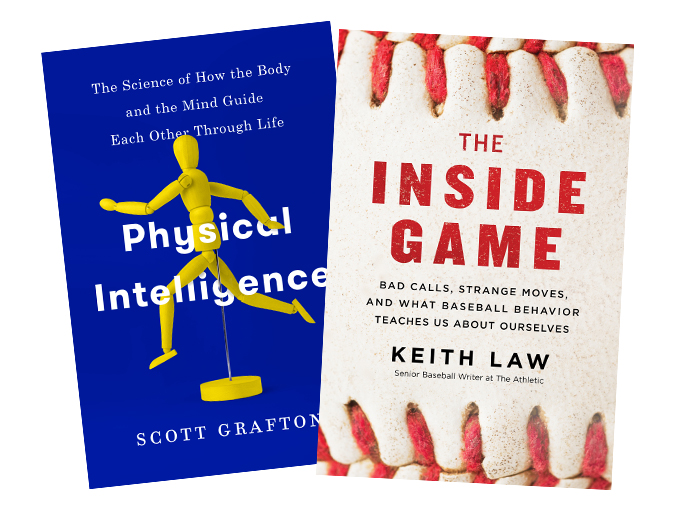Physical Intelligence: The Science of How the Body and the Mind Guide Each Other through Life by Scott Grafton, Pantheon, 2020
The Inside Game: Bad Calls, Strange Moves, and What Baseball Behavior Teaches Us About Ourselves by Keith Law, William Morrow, 2020
How people think, how they rationalize, how they perceive reality, how they make choices, and why they do what they do. All of these are important to understand, especially when developing or selling any product or service. It is even more important for the market researcher whose task is to unravel these mysteries.
Thinking, Fast and Slow, the book by 2002 Nobel Prize winner in Economics Daniel Kahneman, currently underpins a lot of what we understand about how people think and act. While Thinking, Fast and Slow remains the seminal book on this topic, two new books build on how and why we perceive the world and make decisions by structuring their stories around two different physical activity themes. In his book, Physical Intelligence: The Science of How the Body and the Mind Guide Each Other through Life, Scott Grafton combines his knowledge of behavioral neurology and cognitive neuroscience with his passion and experience over a multiday solo mountain hiking trip to explain the concept of “physical intelligence.” Keith Law, in his book, The Inside Game: Bad Calls, Strange Moves, and What Baseball Behavior Teaches Us about Ourselves, structures his book around baseball to achieve his goal of writing “a book for the lay audience that explains cognitive biases and illusions, using examples from the baseball world, enough to make you think about them at home or at work.”
Scott Grafton is the director of the University of California Santa Barbara Brain Imaging Center and holds a neuroscience chair at the university. He describes physical intelligence as “the components of the mind that allow anyone to engage with and change the world…physical intelligence reflects learning processes that constantly tinker with a person’s performance.” With physical intelligence so intertwined with direct physical activity, it was a logical step for Grafton to use a hiking trip to tell his story.
The book is, in essence, a travelogue, which through a physical intelligence experiential lens chronicles how physical intelligence is an integral part to his enjoyment and survival during this hike. By taking you along on his hike, you are there with him as he conveys what he sees, does, and feels, and as he explains how he is using different aspects of physical intelligence in each of his actions and decisions. This process illustrates how we constantly use physical intelligence on almost a reflexive, nonconscious basis. For example, to explain the concept of “optic flow”—which is the sense of motion that one derives from changes in size, texture, or perspective—he explains, from a physical intelligence perspective, why a misstep that is an “above-ground-level fall,” which happens when you are hiking up a steep mountain trail, is very different from a “ground-level fall,” which happens on level ground. An interesting bonus is his discussion of the role that physical intelligence may play in Attention Deficit Disorder.
Keith Law has spent his career in baseball. He currently is the senior baseball writer for The Atlantic and has reported on baseball for ESPN. In a prior role, as the special assistant to the general manager of the Toronto Blue Jays, he was first exposed to Thinking, Fast and Slow, which greatly impacted how he analyzed and wrote about how players and managers make decisions in baseball. In The Inside Game, Law blends behavioral science, baseball lore, and data-driven analysis to show how many of the classic bad baseball decisions, such as head-scratcher bad trades and bad manager calls of not pulling a pitcher when it was obvious he should be, or sticking with a batting rotation that did not make sense, were rationalized.
Though the main focus of the book is using baseball to explain decision-making concepts, he references and explains many interesting non-baseball examples, such as why it is so difficult to unseat antivaccine views. A common theme throughout the book is, “the reality is people rely on inaccurate information even when they have prior knowledge, have been warned that the information may be inaccurate, or have received correct information.”
This book is a home run even if you don’t know anything about baseball. For the baseball lover, The Inside Game is a walk-off grand slam.


Be the first to comment